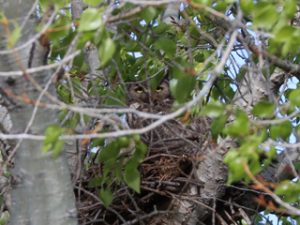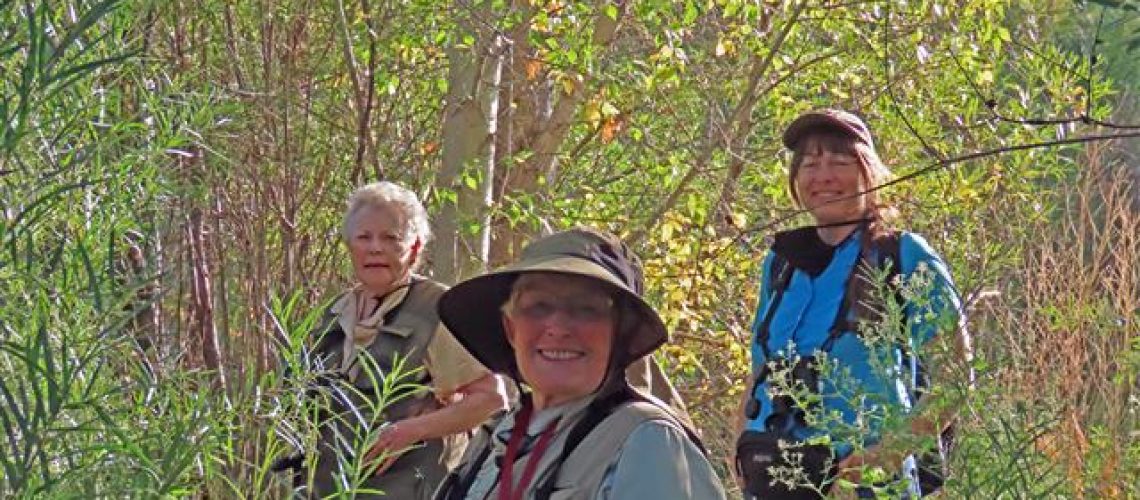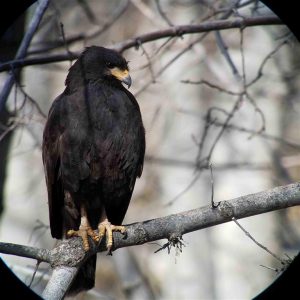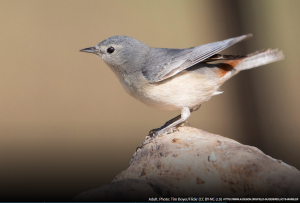Important Bird Surveys in Watson Woods Riparian Preserve
By: Karen O’Neil
(Prescott Creeks Board Chair 2010-2014)
In 2005, the Watson-Willow Lakes Ecosystem Important Bird Area (IBA) was designated as the first Important Bird Area in Yavapai County by a group of Arizona scientists for National Audubon Society. As a part of the ecosystem, Watson Woods Riparian Preserve was included in the IBA.
In consultation with Prescott Creeks, Prescott Audubon Society volunteers conducted a baseline survey of the birds present in November 2008. Beginning in January 2009, surveys were conducted about eight to ten times per year through 2010. Since that time, Prescott Audubon Society volunteers, and when available, Prescott Creeks staff, continued to survey the birds in the Preserve in April, May, late August and early September until 2019. In 2020, due to the coronavirus threat, only two surveys were conducted – May and late August. When we went from eight to ten surveys to four surveys a year we did this based on the presumption that the times chosen would account for the most species that only come to our area to breed (such as Lucy’s and Yellow Warblers and most flycatchers); that only migrate through our area to higher elevations or further north in the United States (such as Black-headed Grosbeaks and Warbling Vireos) as well as all those species that live in our area year round (such as House Finches and Lesser Goldfinches).
While there are several methods available, most of the surveys that have been conducted have been transect surveys. Using Granite Creek as central line, three teams followed specific sections of the creek as closely as vegetation allowed, counting all the individual birds by species they could identify by sight or by vocalization within roughly 50 meters on each side of the creek. This included birds flying over the area. This method was chosen based on the assumption that the highest concentration of birds would most likely be closest to the water, and thus the creek itself. Still, any survey tool available for volunteers to use was expected to provide only a sample of all the numbers of birds present in Watson Woods Riparian Preserve.
One of the reasons that we did our baseline survey in November 2008 was to get a sample of the bird species and numbers that lived year-round in the Preserve. We wanted to know this because in early March 2009, heavy construction was expected to (and did) start on the ecological restoration project in the Preserve funded by major grants from the AZ Water Protection Fund and the AZ Department of Environmental Quality. We thought it would be helpful to know if the construction had any major impact on the numbers or types of species in Watson Woods Preserve. (The data suggests that it did not). Additionally, Prescott Creeks, which was responsible for the oversight of the construction, made sure all the heavy equipment work was done outside of the breeding season (late April to late May, except for owls and hawks which start nesting in March).
All the findings of the surveys that were conducted during the restoration project are discussed in some detail in the final report of the grant work. That report was completed in 2013. Additionally, all the surveys completed since 2011 are now found on a website from Cornell Lab of Ornithology called “eBird”. Anyone can sign up for a free account (donations are accepted of course), and then explore all the bird lists from almost every place on the planet! For the Preserve, those lists are titled Watson Woods Riparian Preserve, Granite Creek North, Granite Creek Middle, and Granite Creek South.
There are a few highlights that the surveys have demonstrated that I want to mention. First, in 2010, volunteers found the Woods’ first pair of Common Black Hawks. This is a mostly tropical raptor species that has been found in southern Arizona riparian areas for a long time. The species first showed up in the Prescott area about 2008. Now it can be found at least as far north as along Oak Creek in Page Springs. Common Black Hawks have returned to Watson Woods every year since, and most years they have nested and raised young to independence from their parents before they migrated south for the winter.
Another highlight is the significant reduction in European Starlings in the Preserve. This species is non-native and aggressive. It nests in cavities as do numerous native species. The Starlings have been known to “evict” native species from the cavities, destroy their eggs or young, and raise their own young. While I cannot account for why European Starlings are significantly reduced, what we have noticed in spring is an increase of Lucy’s Warblers, a species which nests in cavities, and which has increased its numbers in Watson Woods Preserve. It is also listed as a “species of concern” by the Arizona Game and Fish Department. That means its overall numbers in Arizona are precarious. This species is found only in Arizona and New Mexico in the United States.
In spring 2020, for the first time, we found indications of THREE pair of Great Horned Owls, all of which nested and produced young in Watson Woods. One pair with at least one youngster was found on each of the three transects.

Finally, kudos to all the volunteers from Prescott Audubon and to Prescott Creeks staff for all their support of these on-going surveys. Both of these organizations could not accomplish their missions without volunteers! They are the backbone of most non-profit conservation organizations!



